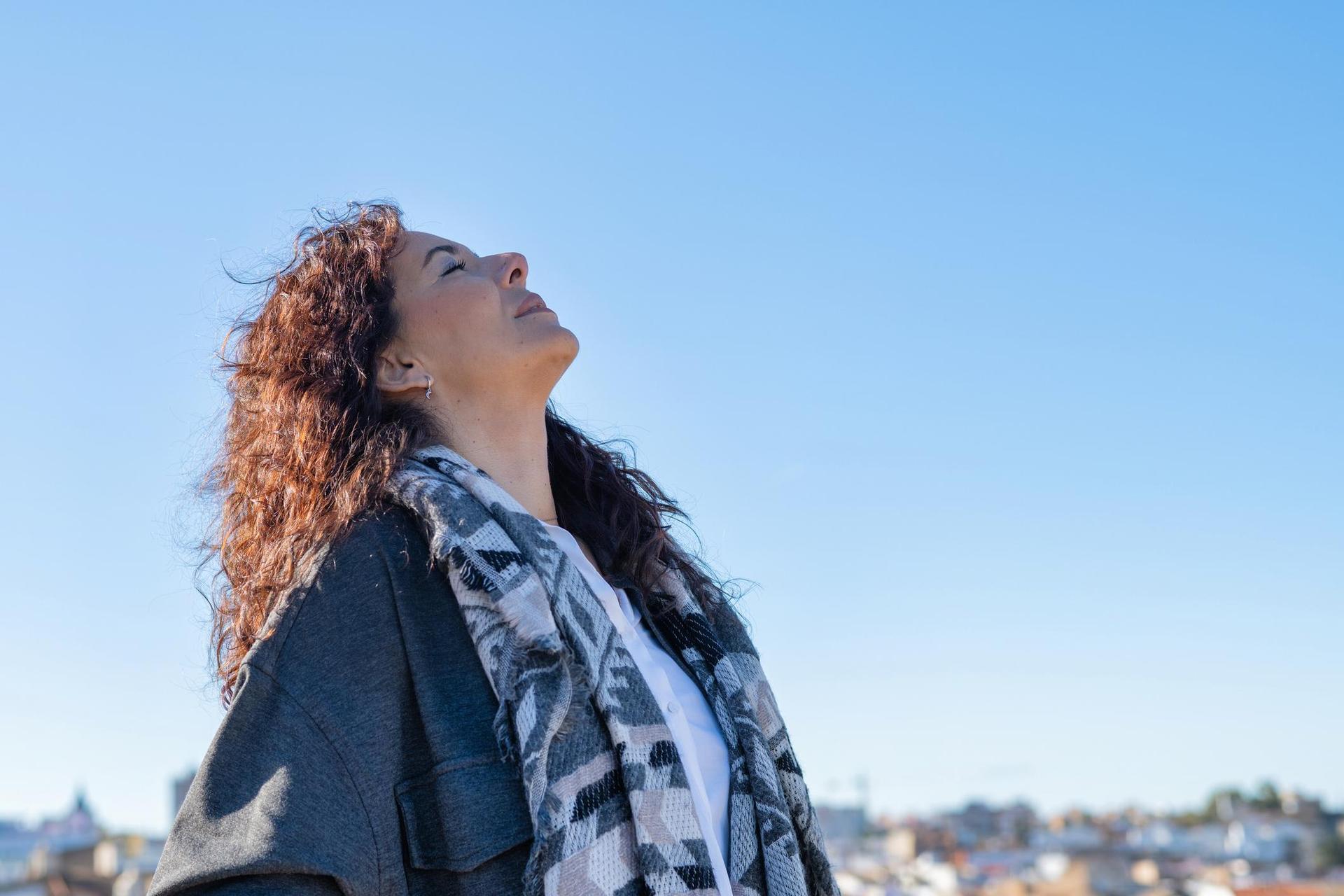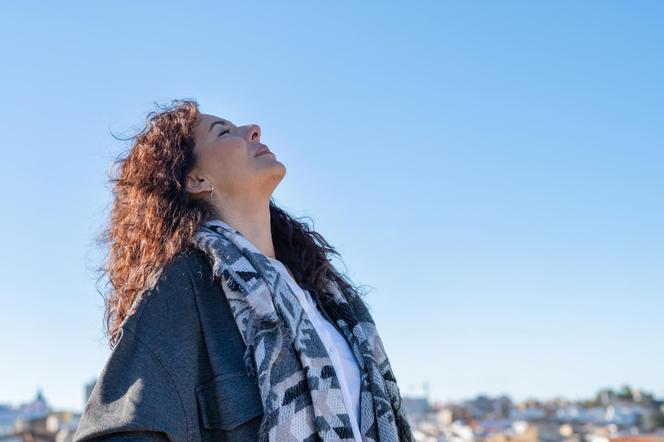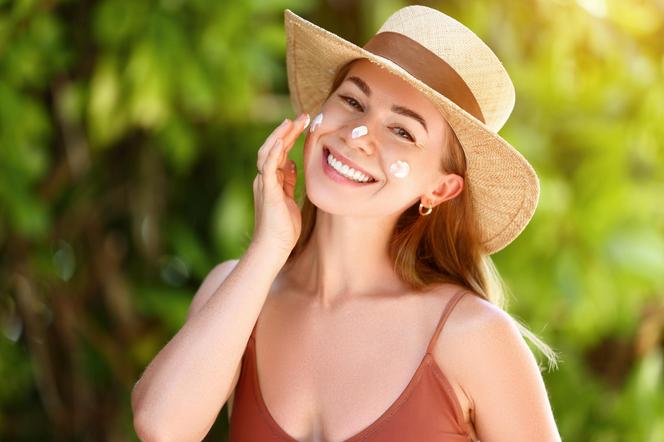
The first warm spring days are a perfect opportunity to recharge your batteries and spend as much free time as possible outdoors. Most of us, longing after the long winter months, do not think about the consequences of early sunbathing, usually forgetting about sunscreen and the rules of safe sunbathing. How to take care of sun protection in spring? Is the spring sun our ally?

It is a common belief that the spring sun is less intense than in summer, and therefore poses much fewer threats to the skin. This is a serious mistake that can cost more than just painful burns.
The intensity of sunlight and the seasons
Solar radiation that reaches our planet from the surface of the Sun is not uniform. About 50 percent consists of infrared radiation, 40%. from the so-called visible light, while about 10 percent is ultraviolet (UV) radiation. It is this light, although it constitutes such a small percentage of total solar radiation, that is the most dangerous to human health.
Types of UV radiation can be characterized by a specific electromagnetic wavelength. Shorter waves have greater energy and therefore have a more intense effect on tissues. The different types of UV rays are:
- UVB rays (waves with a length of 280-320 nm) – constitute about 0.5%. total solar radiation, are responsible for causing the characteristic erythema on the skin during tanning;
- UVA rays (320-400 nm) – constitute about 10%. solar radiation, have the ability to penetrate tissues, penetrate the dermis, causing a number of negative effects, including accelerated aging;
- UVC rays (100-280 nm) – this type of radiation is usually absorbed by the Earth's atmosphere and does not reach the Earth's surface; nevertheless, the growing ozone hole may cause an increasing risk of UVC rays penetrating the atmosphere.
UVA radiation is responsible for the so-called skin photoaging. Penetrating deeper and deeper layers of the epidermis, it causes irreversible changes in the DNA structure, production of free radicals, destruction of elastin and collagen fibers and damage to the function of capillaries.
How much UV radiation reaches the Earth's surface depends on many geographical and astronomical factors. The most important include:
- latitude – the human body is exposed to much higher doses of UV radiation near the equator and lower doses in the temperate zone. It is worth remembering this when going on exotic holidays, where safe sunbathing requires much higher SPF filters to provide effective protection for the skin;
- altitude above sea level – the higher in the mountains, the higher the risk of sunburn;
- radiation-reflecting surface – it has been proven that snow reflects UV radiation by up to 85%, and water by about 10%. Additional refraction of UV rays increases the risk of skin damage;
- cloud cover – how much radiation reaches the Earth's surface also depends on the thickness and density of the cloud layer;
- air pollution – the presence of dust, especially smog, increases the risk of excessive UV radiation;
- time of day – the strongest radiation is recorded around noon, i.e. from 11:00 a.m. to 3:00 p.m.
Despite milder seasons and even the presence of clouds in the sky, UV radiation still reaches the Earth's surface to some extent. In spring, although the sun is not yet as high in the sky as in July or August, it still has a harmful and mutagenic effect on the deep layers of exposed skin.
Skin phototypes and sensitivity to burns
People with light skin and light hair are particularly sensitive to sunburn, especially after the winter period when the skin is covered. There are six individual skin phototypes, which are directly related to the amount of melanin in keratinocytes, which acts as a natural sun filter.
These types describe the characteristics of a person's sensitivity to UV radiation:
- Type 1 – very light, pale pink skin, light or red hair, freckles – this type of skin burns very easily and almost never tans. Such people have the highest risk of skin cancer.
- Type 2 – light skin, blond hair, blue eyes, occasionally brown hair – the skin burns easily and tans slowly. There is a high risk of skin cancer.
- Type 3 – olive skin, dark hair, brown or green eyes – this type of skin does not burn easily and tans to a slightly brown shade. There is still a high risk of skin cancer.
- Type 4 – the so-called Mediterranean type of beauty – slightly brown skin, hazel eyes, dark hair – the skin rarely burns and tans easily. Sensitivity to UV radiation, and therefore the risk of developing cancer in the future, is lower than in previous phototypes.
- Type 5 – the so-called Asian beauty type – dark brown skin, dark hair, dark eyes – the skin never burns, is naturally darker, less sensitive to UV radiation. Skin cancer is quite rare and is usually detected only at an advanced, dangerous stage.
- Type 6 – the so-called Negroid beauty type – dark brown or black skin, dark brown eyes, black hair – this type of highly pigmented skin never burns, and skin cancer is very rare.
People living in Central Europe (including Poles) usually have skin phototype 2 or 3, so they should pay special attention to protecting their skin against the harmful effects of the sun at any time of the year, not only in summer.
Gallery: sun cosmetics with a high protective filter

See the gallery of 9 photos
Other risk factors for cancer
Scientists warn that knowing your own skin phototype is not enough to determine your individual risk of developing skin cancer in the future. There are additional factors associated with an increased risk of skin cancer.
First of all, it is worth examining the entire body in terms of the presence of pigmented moles on the skin – the so-called moles. It is estimated that their number above 100 significantly increases the risk of developing malignant skin cancers, including melanoma. People with a large number of moles should never tan skin that is not protected with high SPF filters. Any suspicious-looking skin lesion or mole (especially one that is rapidly enlarging, bleeding, or has uneven edges) should also be checked by a dermatologist.
Family history of skin cancer is also important. If our parents have been diagnosed with melanoma in the past, there is a high chance that we will also develop cancer.
Another risk factor is the number of sunburns, especially if they occurred in childhood. To some extent, human skin is able to regenerate, but regular sunbathing and use of solariums significantly weaken its elasticity and continuity. In children, however, repair organisms are not yet fully developed, so any damage at the molecular level (DNA and proteins) will easily accumulate.
People taking immunosuppressive drugs (e.g. during oncological therapy or after organ transplantation) should also be particularly careful with sun exposure. Such strong preparations change the body's immune response, which may additionally weaken the skin's repair systems and make it highly sensitive to UV radiation.
Methods of protecting the skin from the sun
Rest and activity outdoors is essential for health, both mental and physical. With the arrival of warmer days in spring, we leave the house more and more often, which, however, means that our skin is exposed to harmful UV radiation. What are the basic ways to protect our body from the sun?
First of all, it should be remembered that light skin phototypes, especially those unaccustomed to exposure to wind and sun after the long winter months, remain very sensitive to the first contact with radiation. It is extremely important to protect exposed parts of the body (arms, face, neck, legs) during all activities performed outdoors (walking, playing sports, gardening, cycling, etc.).
There are many sun protection products available on the market in the form of sprays, milks and balms marked with a sun protection factor (SPF). For everyday activities, dermatologists recommend using SPF with values not lower than 15, while during deliberate sunbathing…
